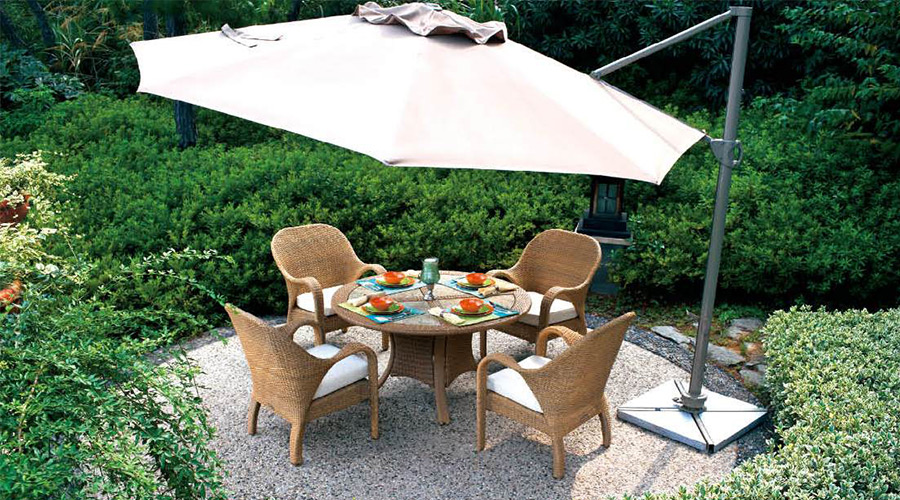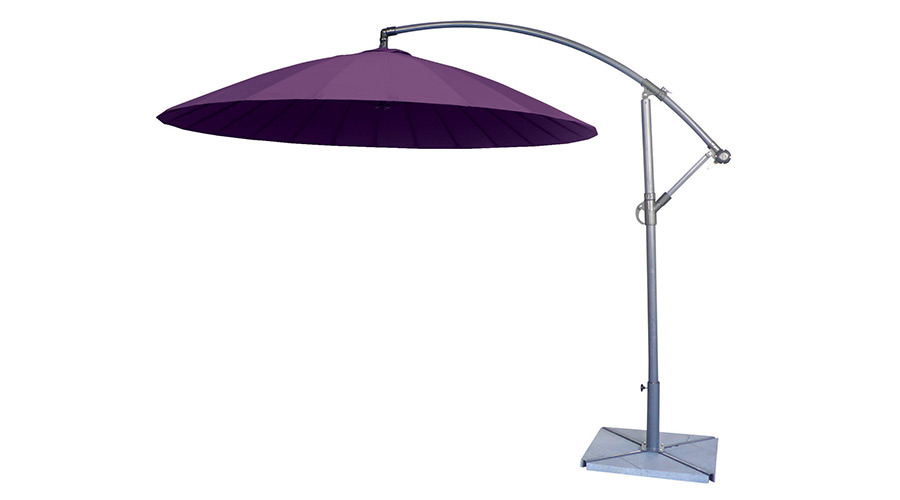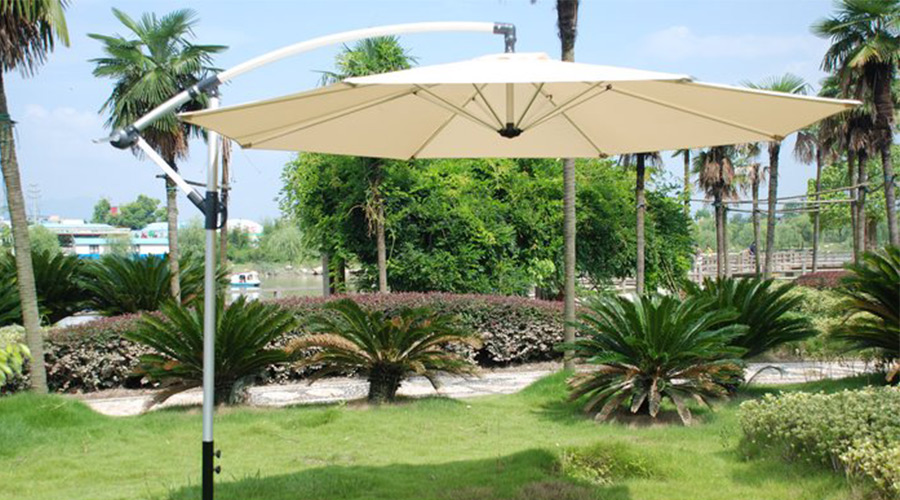Cantilever Parasol – The Buying Guide

If you and your friends and family enjoy spending time outside in your garden, then purchasing a parasol can be one of the most cost-effective ways to improve your garden experience. Not only does a parasol provide protection and relief on sunny days, it is also useful for keeping light rain off of you, so you can enjoy the autumn, winter, and early spring seasons as well.
Not only are they very versatile and useful, they also come in a wide range of styles to suit your particular tastes – or even the existing style of your garden. Many of these have options allowing the parasol to tilt, lower and rise, or lean out from an anchoring point to avoid obstacles in areas where you want to walk or place garden furniture.
Let’s take a look at these last types, the cantilever parasols, as they are not only excellent for keeping walkways and seating areas clear, but they also look very modern and stylish.
Cantilever parasols, in case you aren’t familiar with them, are the type that have the base off to the side, usually anchored in the ground or onto a heavy, moveable base. The parasol part extends over to the side, protecting the area from sun or rain without cluttering up the ground or causing a tripping hazard within it.
This design means that it can even go over something like a Jacuzzi, hammock, lie-low chairs, etc.

How to Choose a Cantiever Parasol
By Size
The first thing to consider is how large a parasol you would like. Obviously, the heavier the parasol itself, the heavier the base will have to be. Likewise, the farther it extends to the side, the more weight the base will need to keep it stable and in place.
Most extend about three metres from the pole. This is usually enough to cover most patio areas. If your patio area is smaller than this, or you just want a smaller coverage, there are also two-metre version available. If your area is larger, you might want to go for the four-metre version. Always remember though, that the larger your parasol is, the heavier it will be, and the base will be even heavier yet. Moving a two-metre version around is not terribly difficult, but the four-metre version may require more than one person to adjust its placement.
Base Type
The base you choose should suit the area you want to cover, and the frequency with which you want to move it around. When deciding how heavy it needs to be, take the advice of an expert, but also keep in mind that too heavy is better than too light. It may seem very stable on a showroom floor, but add in some wind and an otherwise stable parasol might be prone to tipping or even falling over onto those beneath it!
Even if you have an adequately stable base for your parasol, it is best to close up the parasol itself when it’s not in use. This will protect you from winds that stir up during the night, or when you are away from home.
Should it be weatherproof?
Regardless of where you live, there will be weather that can be harsh on outdoor furniture, so you need to be sure that the parasol you choose can cope with the weather where you live. This doesn’t just mean snow and hail though; sun and frequent rain can cause a great deal of damage to parasols if they are not properly designed and built for it.
The majority of cantilevered parasols use power-coated aluminium for the pole and arms, so they are rust-resistant. The fabric should be fade-proof (UV resistant) and water-resistant to a high degree. Comb through the reviews to make sure there no complaints about this kind of wear.
Mechanism Strength
Keep in mind that, as time goes by, the mechanism might be slightly more difficult to operate than when it is brand new and sitting in an indoor showroom. Most parasols use a crank mechanism. When new, these are clean, lubricated, and free from contaminants. With weather, dust, moisture and wear, you should expect it to be a little tougher to use as the years go by. For this reason, make sure that it is easy to operate when new, and you’ll have no trouble later on.
Manoeuvrability
Make sure that you can easily swivel and place the parasol to suit your needs. As the sun moves across the sky, the shadow of the parasol (the shade you can sit it) will also move, so you will need to adjust it to suit the time of day you are using it, or even to move it in the midst of a longer session out in your garden.
Along with swivelling, the parasol should be adjustable up or down, as this can affect the placement of the shade underneath it a great deal.
Many parasols come with extra features – some have these available as additional purchases.
It is always a good idea to have a protective cover for the parasol, even if it holds up well to weather. This is especially important if you don’t use the parasol much during winter, or if you leave on holidays and it sits in one position for a substantial amount of time.
Make sure it fits easily, yet securely to the parasol. Make sure you can put it on and take it off without difficulty.

How to Use a Cantilever Parasol Properly
Assembling
When your parasol arrives, you will either need to hire someone to put it together, or you can do it yourself. Most of them are not difficult to assemble. There will be directions specific to the model you buy, but here are some general guidelines.
First, bolt the stem pole to the base. If the base comes with additional weights, add them to it before attaching the parasol.
Next, lock the umbrella onto the pole using the clamp provided.
Finally, lift the umbrella handle. The canopy will extend up and out, to its full extent, at which time you should hear the spring lock into place.
You can now use the crank to open and close the umbrella.
Taking Care While Operating
Some clever engineering has made operating your cantilever parasol simple and easy. Simply turn the crank one way to open the umbrella, or the other way to close it. To rotate it, unfasten the clamp on the pole and it will be free to rotate. Then clamp it in place to prevent accidental movement from the wind or elevation.
Some models even have the ability to adjust the tilt of the umbrella for better protection from the sun when it is low in the sky. These are normally adjusted using a handle near the top of the pole.
Models differ, so be sure to check your instructions for specifics.
Never use the parasol without enough weight on the base to prevent it tipping over. If you are unsure, always err on the side of too much weight on the base, rather than too little.
To avoid damage from the weather, close the umbrella portion at night, when on holiday, and in very inclement weather. If you plan to be gone for an extended period, you might even want to move it into a garage or shed until you return.
Last Updated on March 21, 2023 by Matt
Contents
